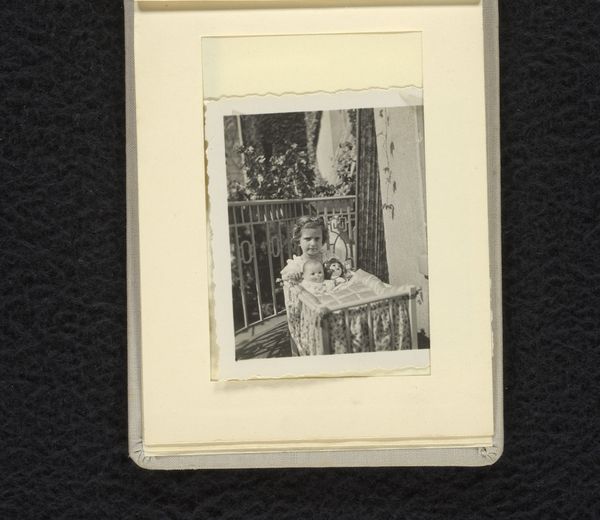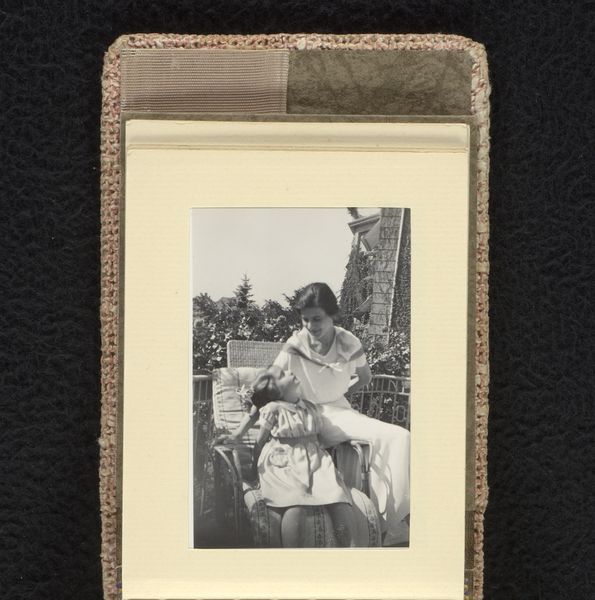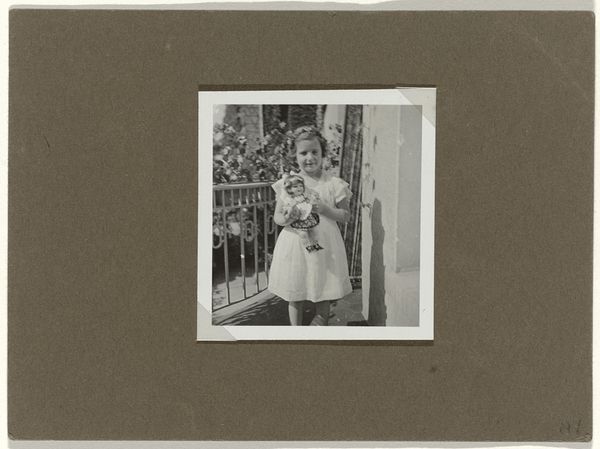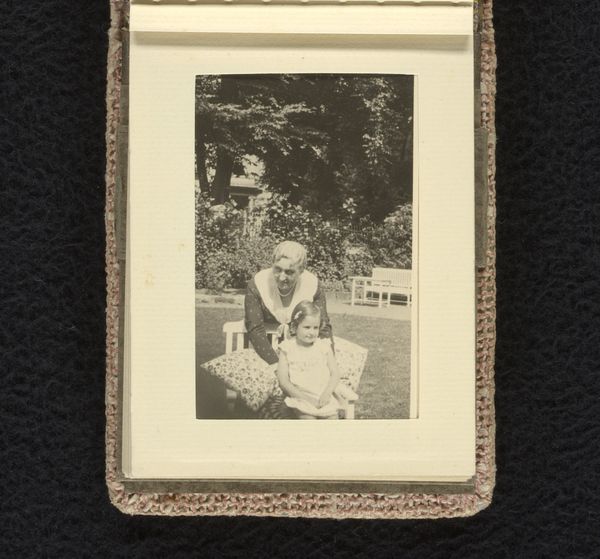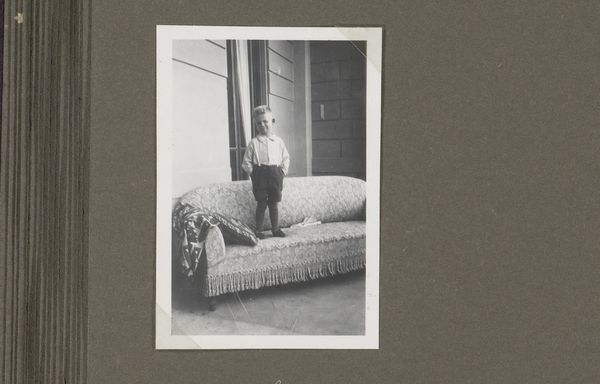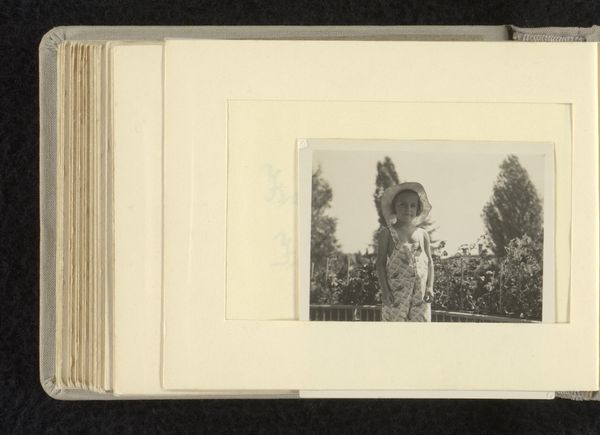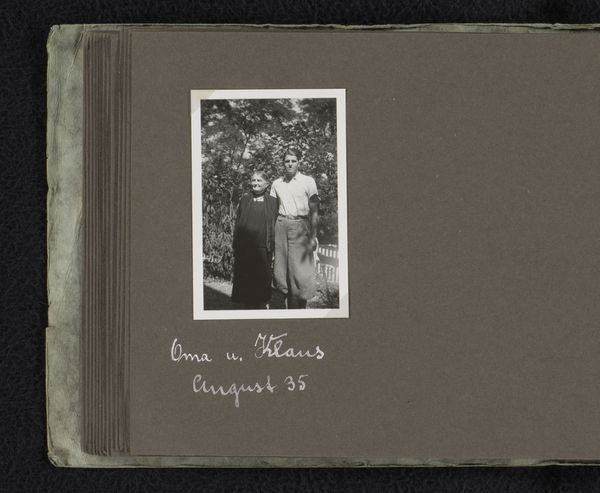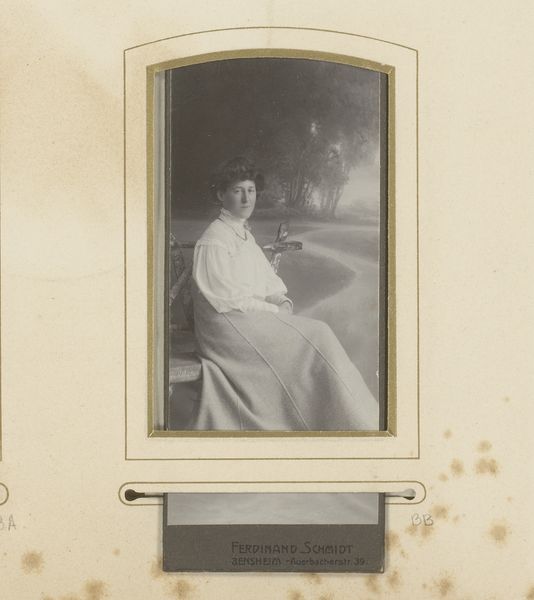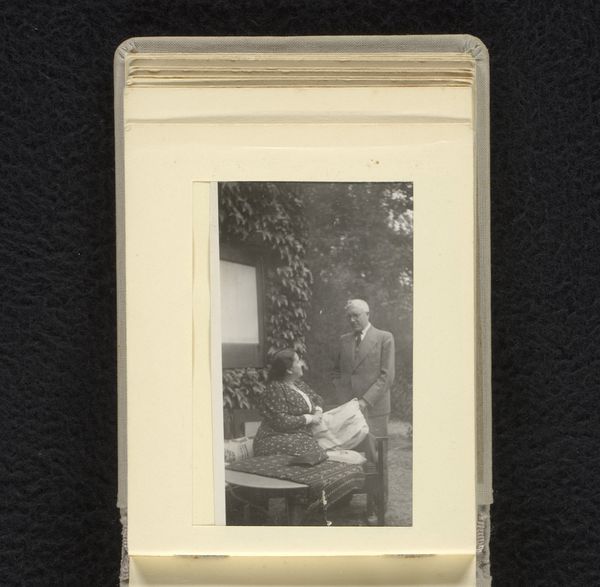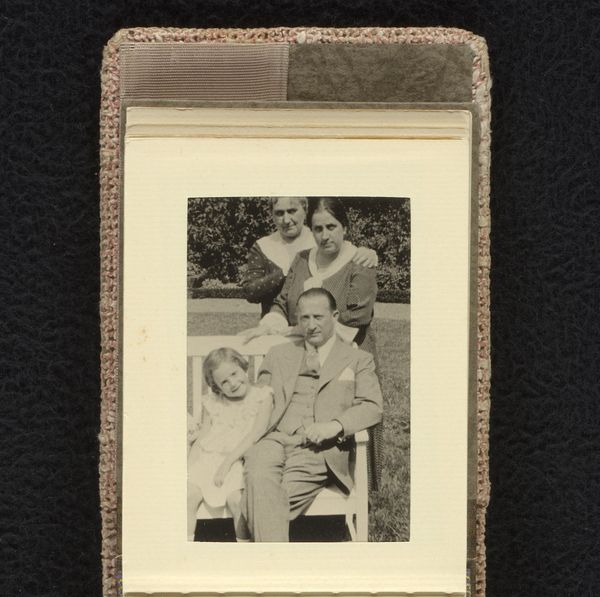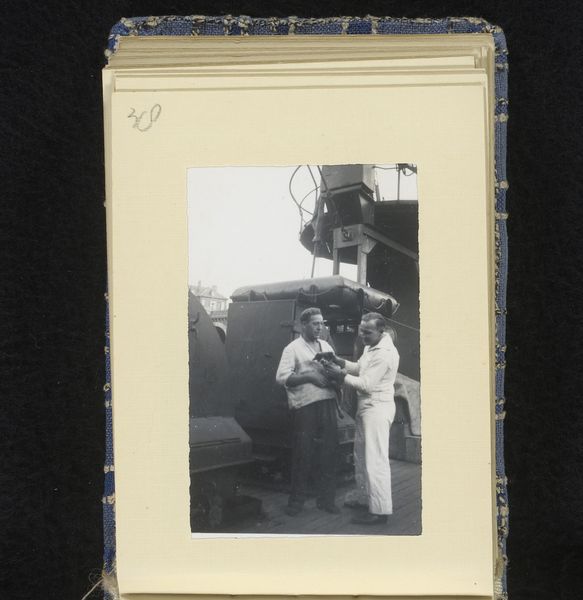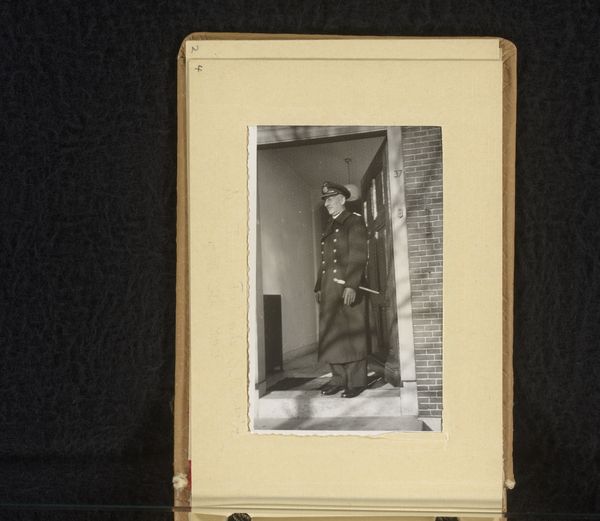
photography, gelatin-silver-print
#
portrait
#
photography
#
group-portraits
#
gelatin-silver-print
#
modernism
#
realism
Dimensions: height 90 mm, width 65 mm
Copyright: Rijks Museum: Open Domain
Curator: Here we have a photograph, probably taken between 1934 and 1937, titled "Isabel on the Balcony." It's a gelatin silver print. I am immediately struck by the formality of the little girl’s pose. She looks at the camera with a certain gravity. It’s charming and slightly unsettling. Editor: Indeed. I sense that too; especially looking at those two dolls in what looks to be a baby carriage! There is almost an "uncanny valley" effect where, because we can not decipher expression through the photographic aging and greyscale, it is hard to know what these objects mean to the subject. Curator: Exactly. Looking at its creation during the interwar period, it’s impossible not to view this through the lens of increasing societal tension and familial anxiety about the future. The "documentary style" and social realism art movement meant that artists turned away from aesthetics towards communicating about social issues in a time when many countries began moving toward fascism. Editor: Absolutely. This photograph has a direct simplicity to it, an almost unnerving realism, devoid of sentimental idealization that some photography, portrait photography from previous generations, used as a basis. The very setting—on a balcony, overlooking some unspecified view beyond—suggests the fragile precariousness. One feels like any minute the photo's figures, their peace could be upturned by exterior, unseen, uncontrollable circumstances, not just implied social/political situations, but simply, an errant breeze. Curator: And photography, unlike painting, held a sense of almost clinical "truth telling." The photograph then may show a family caught at an odd in-between moment. I wonder if these dolls themselves suggest some hidden aspect of life and family. Editor: One sees a lot in these "caught" and realistic, candid seeming scenes. There’s something about those particular dolls though, so blank and wide-eyed, juxtaposed with Isabel’s forward gaze... It’s a curious composition. It makes one ask "Who's observing and protecting whom?". There could be many psychological layers to their presentation. Curator: Yes! Overall, it’s the photograph's emotional ambivalence which is its defining and lasting legacy. This singular, seemingly straightforward photograph speaks to many historical layers, both intimate and macro. Editor: Right. One carries away, not a simple story, but a set of questions lingering just beyond easy answers and interpretations, in effect mirroring those uneasy conditions the era instilled within everyday individuals.
Comments
No comments
Be the first to comment and join the conversation on the ultimate creative platform.
